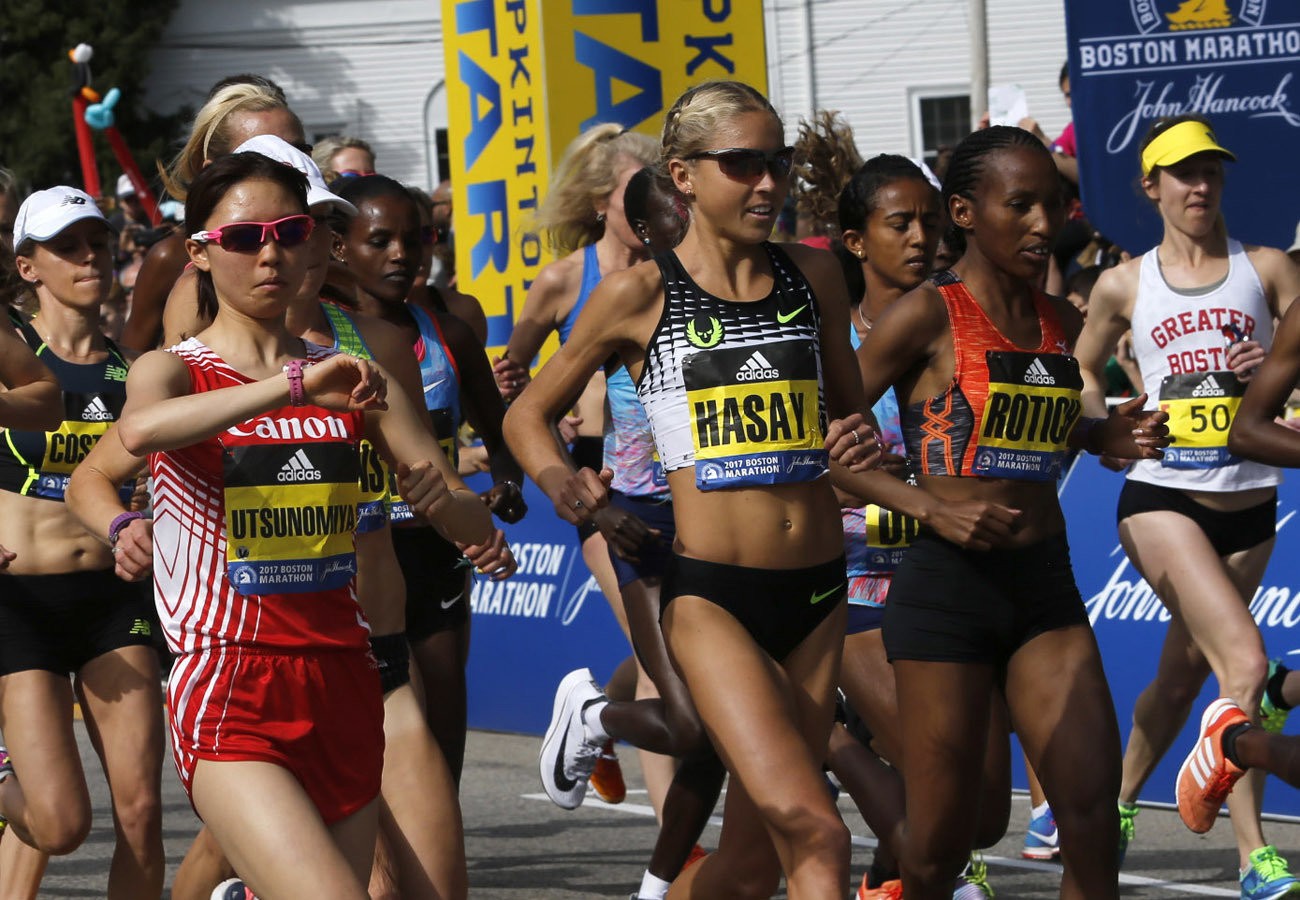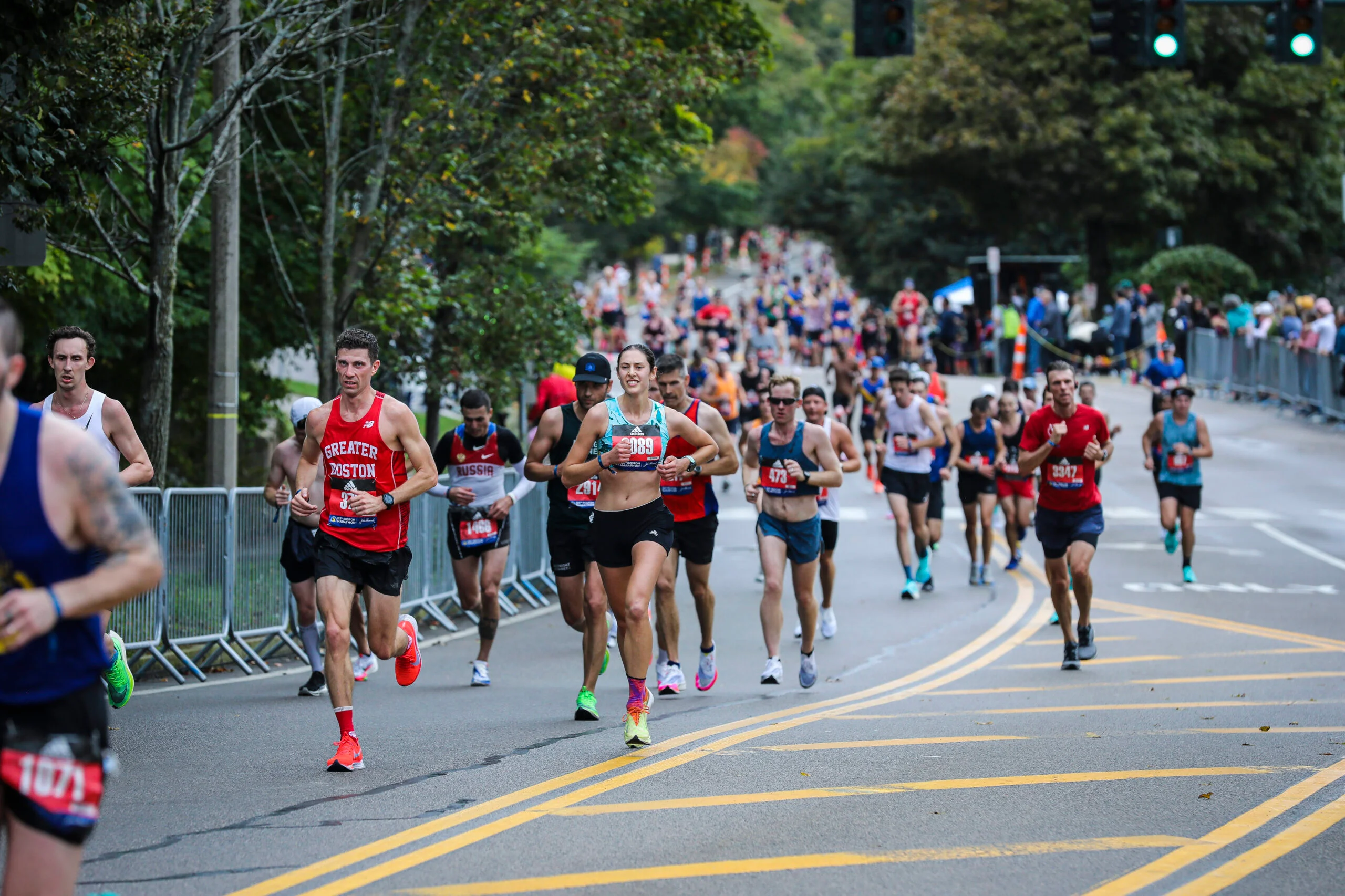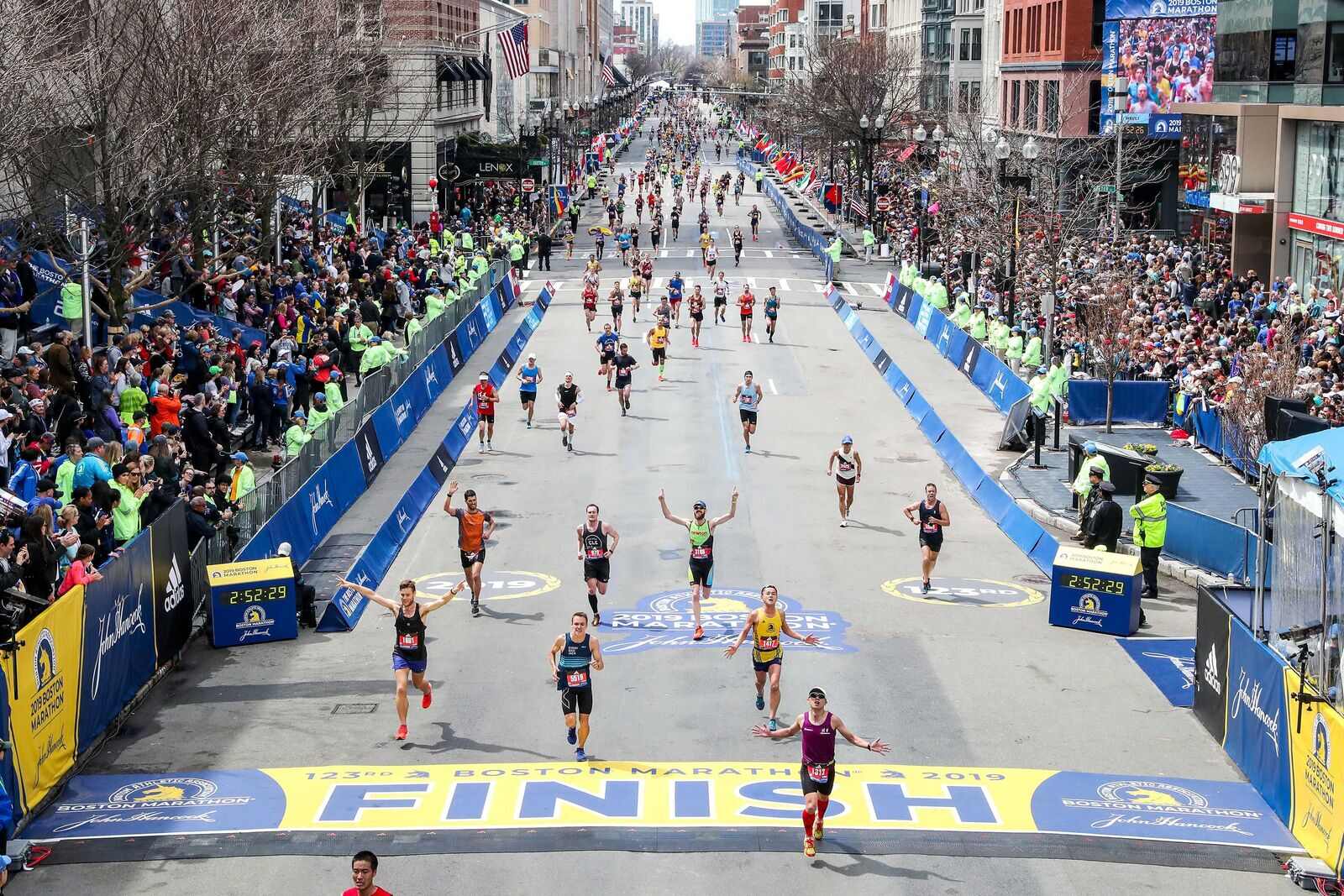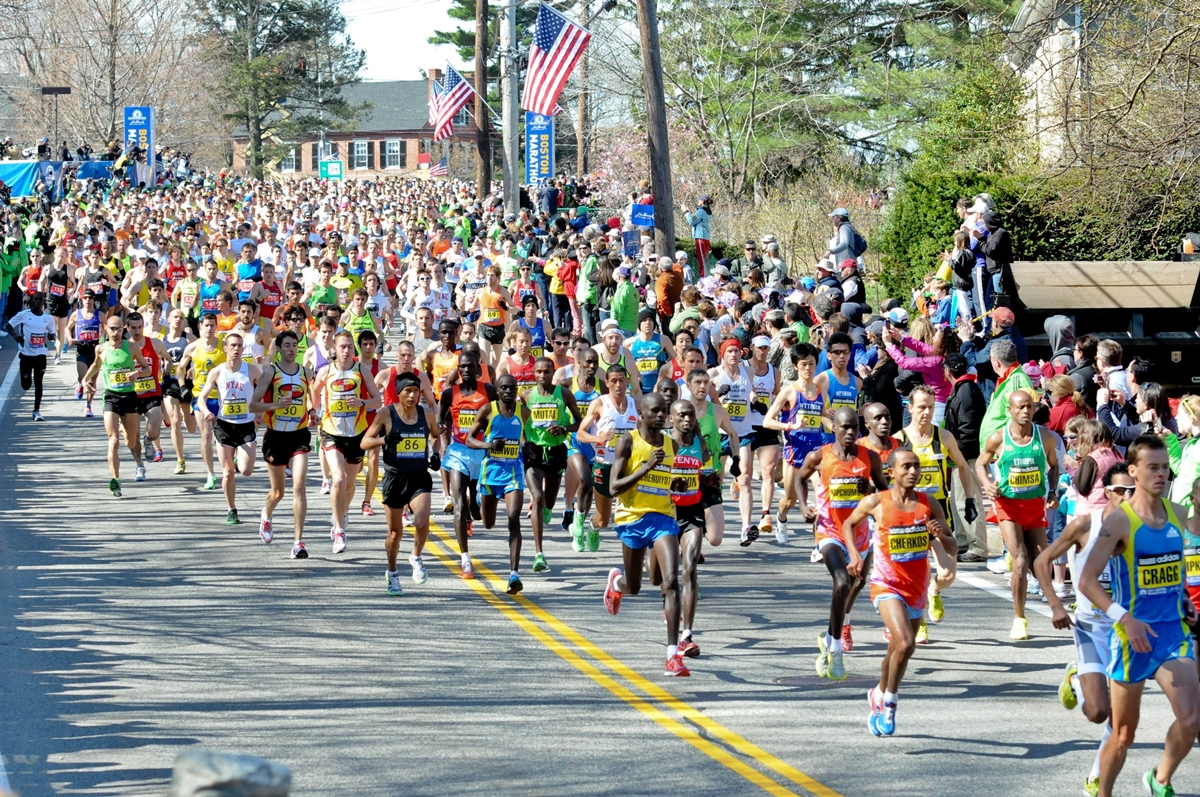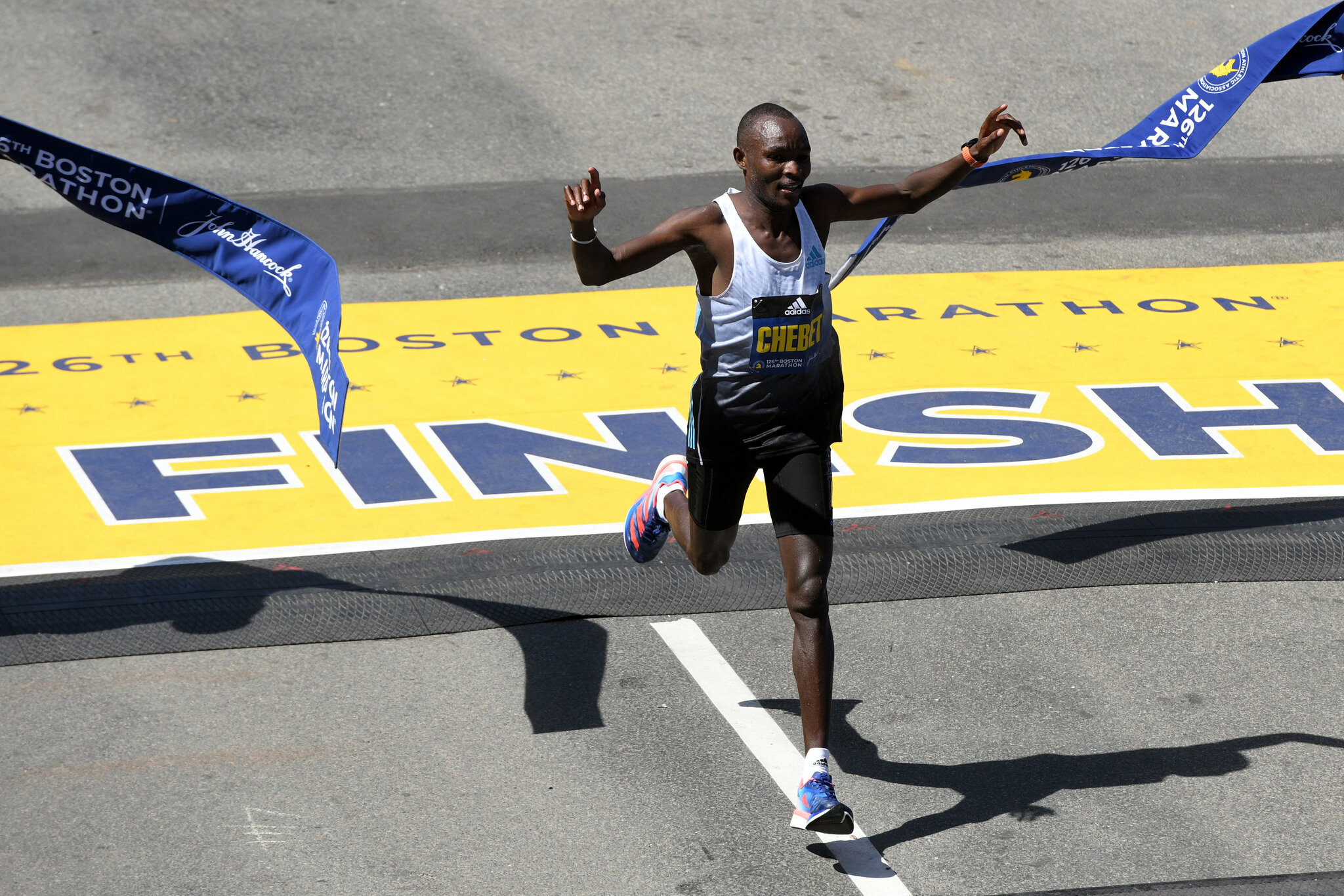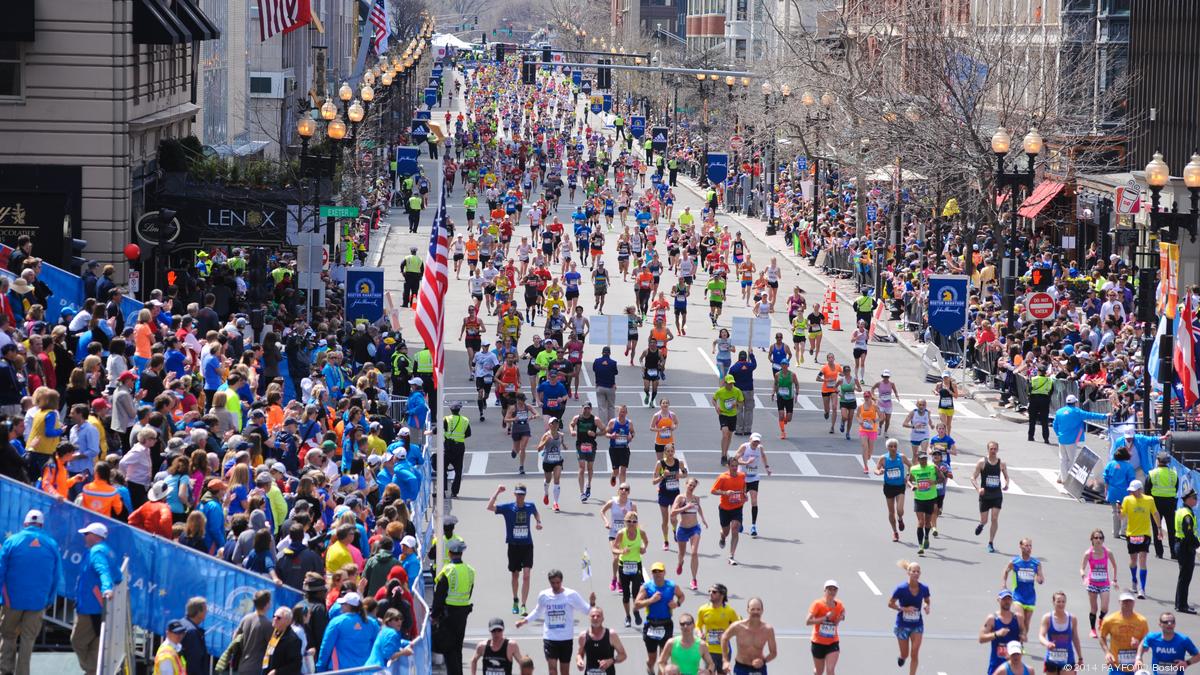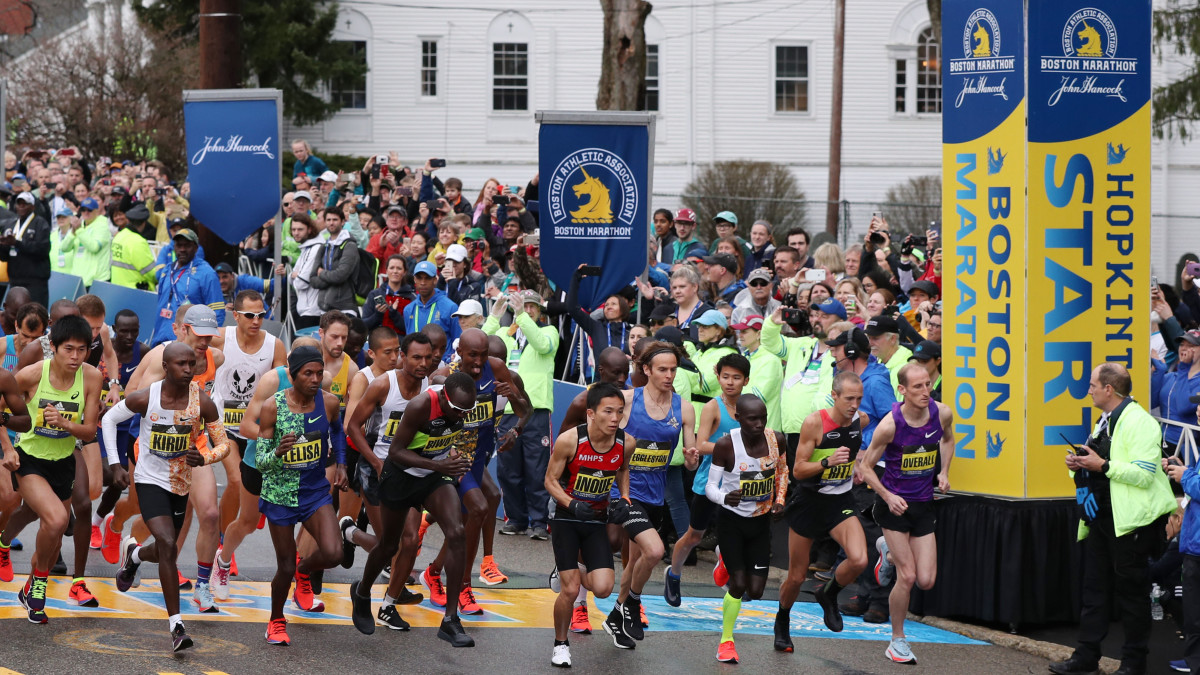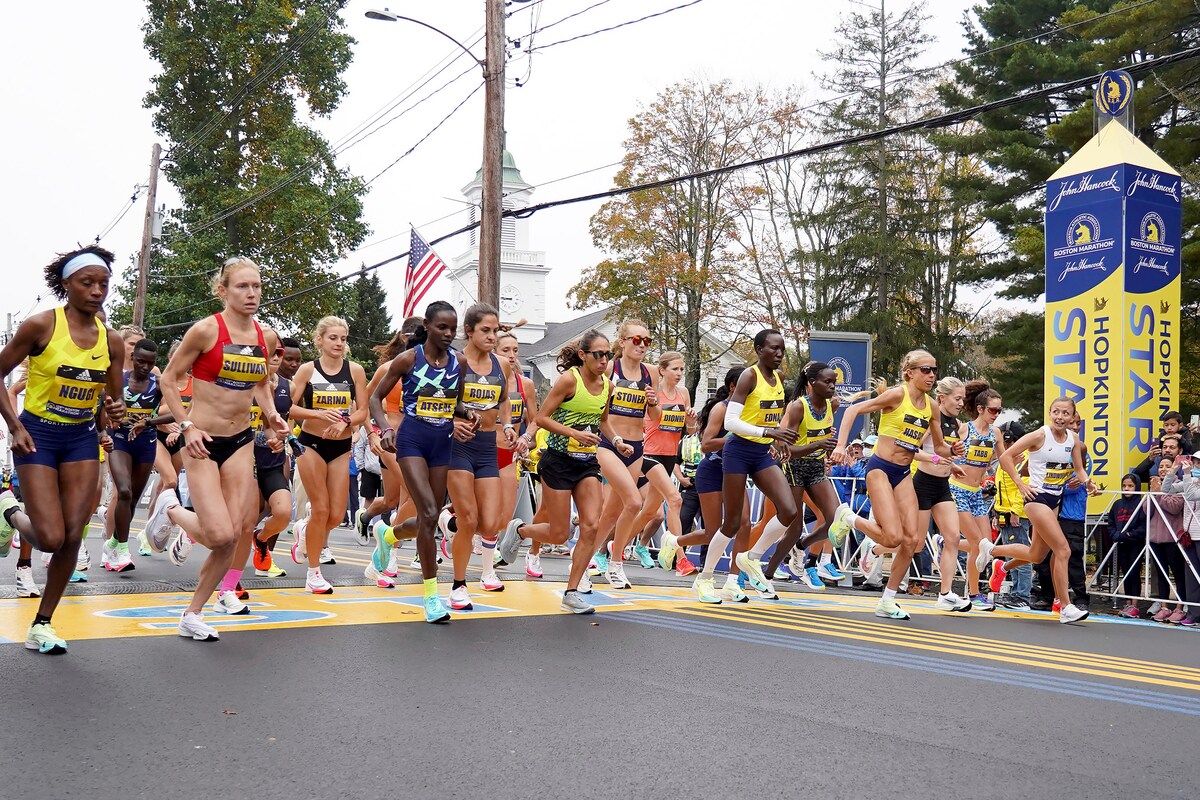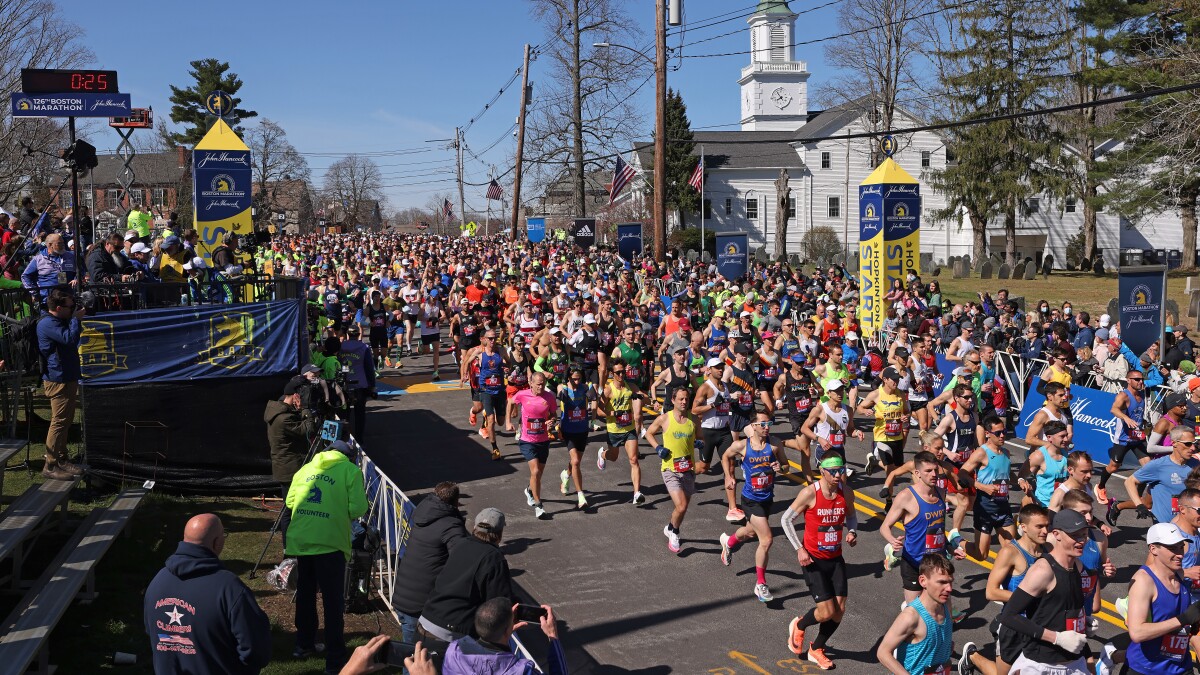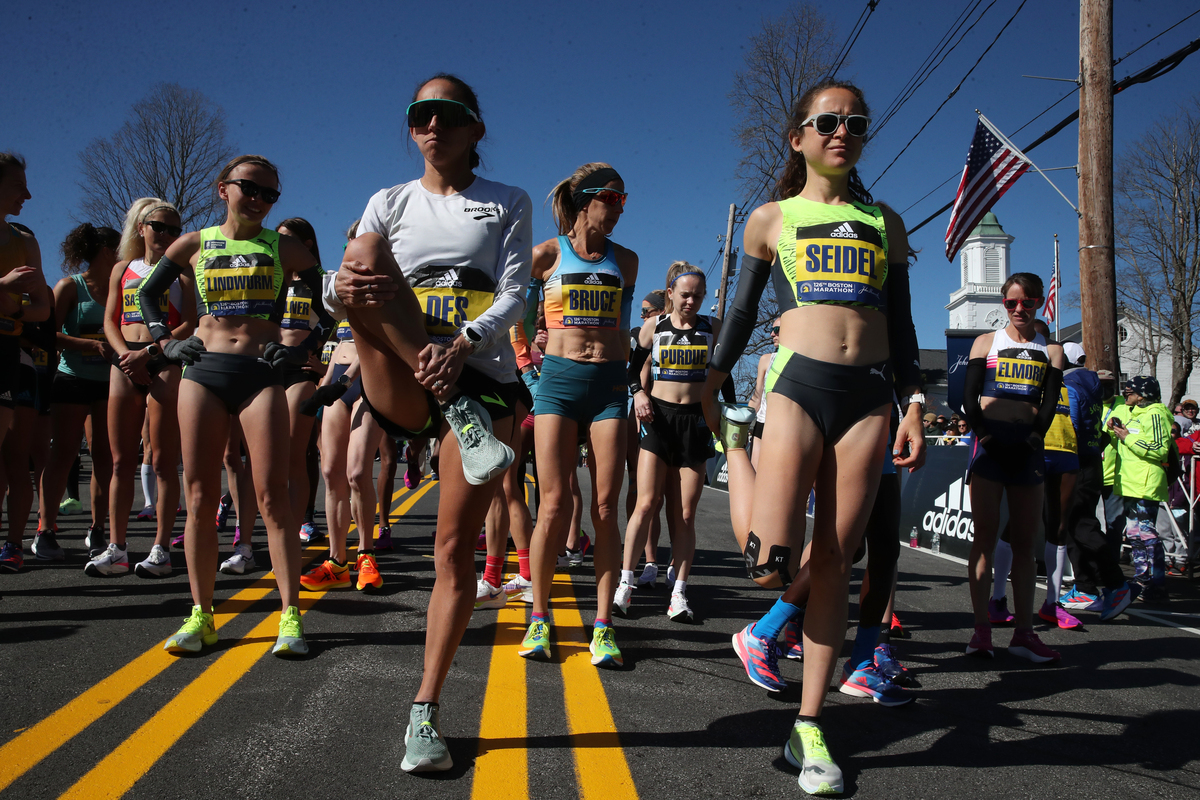

Featured
How To Get Into The Boston Marathon
Modified: January 22, 2024
Discover the ultimate guide on how to get featured in the prestigious Boston Marathon. Unlock the secrets to qualifying, training, and achieving your dream of participating in this iconic race.
Introduction
Welcome to the world-renowned Boston Marathon, a prestigious event that attracts thousands of runners from around the globe. Held annually on Patriots’ Day in April, the Boston Marathon is the oldest marathon in the world and is widely regarded as one of the most challenging and sought-after races to participate in.
Whether you are a seasoned marathon runner or aspire to complete your first 26.2-mile race, the Boston Marathon offers a unique and thrilling experience. From the electrifying atmosphere along the course to the iconic finish line on Boylston Street, this race is a testament to the endurance and dedication of runners.
However, getting into the Boston Marathon is not as simple as signing up and showing up on race day. The race has stringent qualifying standards that participants must meet to earn an entry. These standards are designed to ensure that runners have the necessary training and experience to complete the race safely and enjoyably.
In this guide, we will walk you through the qualifying standards, registration process, and provide valuable tips to help you improve your running performance and train effectively for the Boston Marathon. We will also discuss nutrition and hydration strategies, injury prevention and recovery techniques, and mental preparation for the race day.
Whether you’re dreaming of achieving a personal best time or simply want to experience the thrill of running in one of the most prestigious marathons in the world, this guide will help you on your journey. So, lace up your running shoes, let’s dive in, and discover how to make your dream of running the Boston Marathon a reality.
Qualifying Standards for the Boston Marathon
The Boston Marathon has strict qualifying standards that runners must meet in order to secure a spot in the race. These standards are based on age and gender, and they are designed to ensure that participants have the necessary level of fitness and experience to complete the marathon.
Qualifying times are based on the age on the day of the Boston Marathon. The standards are set in a way that they become more lenient as the age increases. For example, the qualifying time for male runners in the 18-34 age group is 3 hours and 5 minutes, while the qualifying time for female runners in the same age group is 3 hours and 35 minutes. In the 35-39 age group, the qualifying time for male runners is 3 hours and 10 minutes, and for female runners, it is 3 hours and 40 minutes.
To ensure accuracy, qualifying times need to be achieved in a certified marathon, and the course should be USATF, AIMS, or foreign equivalent certified. It’s important to carefully review and understand the guidelines set forth by the Boston Athletic Association (B.A.A.), the organization responsible for organizing the Boston Marathon.
It’s worth noting that meeting the qualifying standards does not guarantee entry into the Boston Marathon. Due to the popularity of the event, there is often a surplus of qualified runners and a limited number of spots available. In such cases, runners who have achieved a time faster than the qualifying standard are given preference, and the field is filled using a “rolling admission” process.
For those who do not meet the qualifying standards, there are still opportunities to participate in the Boston Marathon through charity programs. Many charitable organizations partner with the B.A.A. to offer entries to runners who fundraise for their cause. This allows individuals to support a worthy cause while fulfilling their dream of running the historic race.
Qualifying for the Boston Marathon requires commitment, dedication, and a strategic training plan. In the next section, we will discuss the registration process in detail, providing you with everything you need to know to secure your spot in this legendary race.
Understanding the Registration Process
The registration process for the Boston Marathon is a multi-step procedure that requires careful attention and timely completion. Due to the high demand and limited spots available, it’s essential to understand the registration timeline and requirements to ensure your best chance of securing a spot in the race.
1. Qualifying: Before registering, make sure you have met the qualifying standards for your age and gender. These qualifying times must be achieved in a certified marathon, as mentioned in the previous section.
2. Registration Period: The registration period for the Boston Marathon typically opens several months before the race day. The exact dates for registration are announced by the Boston Athletic Association (B.A.A.) on their official website. It’s crucial to stay up-to-date with the registration dates to avoid missing out on the opportunity.
3. Online Registration: The Boston Marathon utilizes an online registration system. During the registration period, you will need to complete the online application form, providing the necessary information such as your qualifying marathon details and personal details. Alongside the form, you will also need to submit the payment for the registration fee.
4. Rolling Admission: As mentioned earlier, entry into the Boston Marathon is granted on a “rolling admission” basis. This means that runners who have achieved a time faster than the qualifying standard for their age and gender are given priority. The fastest qualifiers are accepted first, with entry gradually extending to other qualified runners until all the available spots are filled.
5. Confirmation: Once you have submitted your application, you will receive a confirmation email indicating whether your application has been accepted or not. If accepted, you will receive further instructions regarding race packet pickup, runner’s bib, and other important details.
6. Deferred Entry and Transfers: In certain situations, if you are unable to participate in the Boston Marathon after being accepted, you may have the option to defer your entry to the following year or transfer your entry to another qualified runner. The B.A.A. provides specific guidelines and deadlines for these processes.
It’s important to note that the registration process for the Boston Marathon can be highly competitive, and not all applicants may be accepted. However, even if you are not successful in securing an entry through the general registration, there are still opportunities to participate through various charity programs or by joining a marathon tour group.
In the next section, we will share valuable tips and strategies to help you improve your running performance and increase your chances of qualifying for the Boston Marathon.
Tips for Improving Your Running Performance
Improving your running performance is key to meeting the qualifying standards for the Boston Marathon. By implementing effective training strategies and adopting the right mindset, you can enhance your endurance and speed, setting yourself up for success. Here are some tips to help you improve your running performance:
- Consistent Training: Establish a consistent training routine that includes a combination of endurance runs, tempo runs, interval training, and long runs. Gradually increase your mileage and intensity over time.
- Strength Training: Incorporate strength training exercises into your routine to build muscular endurance and prevent injuries. Focus on strengthening your core, legs, and upper body.
- Proper Nutrition: Fuel your body with a balanced diet that includes carbohydrates, protein, and healthy fats. Focus on consuming whole foods and stay hydrated to support optimal performance.
- Rest and Recovery: Allow your body ample time to rest and recover between training sessions. Incorporate rest days into your schedule and prioritize sleep to aid in muscle repair and growth.
- Strategic Pacing: Practice running at different paces, including race pace, to improve your speed and endurance. Learn to listen to your body and find the right balance between pushing yourself and avoiding overexertion.
- Interval Training: Incorporate interval training, such as track workouts or hill repeats, into your training plan to improve your speed and anaerobic threshold.
- Mental Preparation: Develop mental resilience and focus by practicing visualization, positive affirmations, and mindfulness techniques. Train your mind to overcome challenges and stay motivated during the race.
- Join a Running Group: Consider joining a running club or finding a training partner to stay motivated and accountable. Training with others can provide valuable support, encouragement, and friendly competition.
Remember, improving your running performance takes time and patience. Be consistent in your training, listen to your body, and make adjustments as needed. Celebrate small victories along the way and trust the process. With determination and perseverance, you can enhance your running performance and achieve your goals, including qualifying for the Boston Marathon.
In the next section, we will provide a comprehensive training plan to help you prepare for the Boston Marathon.
Training Plan for the Boston Marathon
Preparing for the Boston Marathon requires a well-structured and progressive training plan. This plan should focus on building endurance, increasing mileage, and incorporating specific workouts to improve speed and race-day performance. Here’s a comprehensive training plan to help you prepare for the Boston Marathon:
- Base Building: Start your training by establishing a solid base of running fitness. Gradually increase your mileage over several weeks to build endurance. Aim for at least three to four runs per week, including a long run on the weekends.
- Intervals and Speed Work: Incorporate interval training and speed work into your training plan to improve your running economy and race pace. Include tempo runs, track workouts, and hill repeats to enhance your speed and stamina.
- Long Runs: Gradually increase the distance of your long runs, aiming to complete at least one 20-mile run before the marathon. These long runs will help build endurance and give you confidence in your ability to complete the marathon distance.
- Specificity Runs: Include workouts that mimic race conditions. These can include goal-paced runs or race simulation workouts to practice your pacing and mental toughness.
- Rest and Recovery: Schedule rest days throughout your training plan to allow your body time to recover and reduce the risk of overuse injuries. Consider incorporating activities like yoga or stretching to promote flexibility and aid in recovery.
- Tapering: In the weeks leading up to the marathon, reduce your mileage and intensity to allow your body to fully recover and be fresh on race day. This tapering period typically lasts two to three weeks.
- Mental Preparation: Use your training runs as opportunities to practice mental toughness. Visualize crossing the finish line and remind yourself of the hard work you’ve put into your training. Utilize positive self-talk and stay focused during challenging runs.
- Listen to Your Body: Pay attention to any signs of fatigue or injury during your training. It’s important to rest and seek appropriate treatment if needed to prevent worsening of any injuries.
Remember that every runner is unique, and what works for one person may not work for another. It’s important to adapt the training plan to your own needs and listen to your body throughout the training process. Consult with a coach or experienced runner to customize the plan according to your fitness level and goals.
In the next section, we will discuss nutrition and hydration strategies to support your marathon training and performance.
Nutrition and Hydration Strategies for Marathon Runners
Nutrition and hydration play a crucial role in the performance and recovery of marathon runners. Proper fueling before, during, and after your training runs and the Boston Marathon itself is essential for maintaining energy levels and optimizing performance. Here are some nutrition and hydration strategies to help you succeed:
- Pre-Run Nutrition: Consume a balanced meal containing carbohydrates, protein, and a small amount of healthy fats 2-3 hours before your training runs. This will provide you with the necessary fuel to sustain your efforts.
- During-Run Fueling: For runs lasting longer than 60-90 minutes, you may need to consume carbohydrates to maintain energy levels. Experiment with different types of fuel, such as energy gels, chews, or sports drinks, to determine what works best for you. Aim for 30-60 grams of carbohydrates per hour.
- Hydration: Hydration is crucial for maintaining performance and preventing dehydration during training and the race. Drink water regularly throughout the day and consume fluids during your runs. Aim to drink 6-8 ounces of water or sports drink every 20 minutes, depending on your sweat rate.
- Post-Run Recovery: Proper recovery nutrition is essential for replenishing glycogen stores and promoting muscle repair. Consume a combination of carbohydrates and protein within 30 minutes of finishing your run to facilitate recovery. This can be in the form of a recovery shake, a well-balanced meal, or a snack.
- Carbohydrate Loading: In the days leading up to the Boston Marathon, you may consider carbohydrate loading. This involves increasing your carbohydrate intake to maximize glycogen stores. Focus on consuming complex carbohydrates such as whole grains, fruits, and vegetables.
- Practice Race-Day Nutrition: During your training, experiment with your race-day nutrition and hydration strategies. Determine what works best for you in terms of timing, types of fuel, and fluid intake. This will help you avoid any surprises or digestive issues on race day.
- Consult a Sports Nutritionist: Consider working with a sports nutritionist who specializes in endurance running to create a personalized nutrition plan. They can assess your individual needs, address any nutritional deficiencies, and provide specific recommendations based on your training and goals.
Remember, proper nutrition and hydration strategies are just as important during training as they are on race day. Fuel your body with the right nutrients, stay hydrated, and listen to your body’s signals. By prioritizing your nutrition and hydration, you can optimize your performance and increase your chances of a successful Boston Marathon experience.
In the next section, we will discuss strategies for injury prevention and recovery during your marathon training.
Injury Prevention and Recovery
Marathon training can put a significant amount of stress on your body, making injury prevention and recovery crucial in maintaining your training progress and reaching your goals. By following proper strategies, you can minimize the risk of injury and ensure a more successful and enjoyable marathon experience. Here are some key tips for injury prevention and recovery:
- Gradual Progression: Avoid sudden increases in mileage or intensity. Gradually build up your training volume and intensity to allow your body to adapt and minimize the risk of overuse injuries.
- Proper Warm-up and Cool-down: Always start your training sessions with a dynamic warm-up to prepare your body for exercise. After your run, include a cool-down routine that incorporates stretching to promote muscle recovery and flexibility.
- Strength and Cross-Training: Incorporate regular strength training exercises into your routine to strengthen muscles, ligaments, and tendons. Engaging in cross-training activities such as swimming or cycling can also help prevent overuse injuries and provide variety in your training routine.
- Listen to Your Body: Pay attention to any pain, discomfort, or signs of fatigue during your training. Rest is just as important as training, so listen to your body’s signals and take appropriate rest days when needed.
- Proper Footwear: Invest in a pair of well-fitting running shoes that provide adequate support and cushioning for your feet. Replace your shoes regularly to maintain proper shock absorption and reduce the risk of foot and leg injuries.
- Cross-Train and Recover: Incorporate recovery techniques such as foam rolling, stretching, and massage into your training routine. Taking rest days, getting enough sleep, and prioritizing recovery activities can help prevent overtraining and reduce the risk of injuries.
- Address Potential Weaknesses: If you have recurring pain or discomfort, consult a professional such as a physical therapist or a sports medicine specialist. They can help identify any underlying weaknesses or imbalances and provide appropriate exercises or treatments to address them.
- Modify Training as Needed: Adapt your training plan if you experience pain or injury. It’s better to take a step back and modify your training than to push through and risk further injury. Be flexible and adjust your plan as necessary.
Remember, prevention is key when it comes to injuries. By taking proactive steps to minimize the risk, you can stay on track with your training and increase your chances of a successful Boston Marathon experience. If you do sustain an injury, it’s important to address it promptly and seek appropriate medical advice to ensure proper recovery.
In the next section, we will discuss mental preparation and race-day strategies for the Boston Marathon.
Mental Preparation and Race-Day Strategies
Running a marathon requires not only physical strength but also mental resilience. Mental preparation plays a vital role in staying focused, motivated, and confident throughout the training and on race day. Here are some strategies to help you mentally prepare for the Boston Marathon:
- Set Realistic Goals: Define clear and achievable goals for your marathon, whether it’s hitting a specific time, enjoying the experience, or simply crossing the finish line. Having realistic expectations will help you stay motivated and focused.
- Visualize Success: Mental imagery is a powerful tool. Close your eyes and visualize yourself running strong, crossing the finish line, and achieving your goals. Visualizing success can boost your confidence and help you overcome challenges during the race.
- Positive Self-Talk: Replace negative thoughts with positive affirmations. Remind yourself of your training, your capabilities, and the progress you’ve made. Use phrases like “I am strong,” “I can do this,” and “I am ready for the challenge.”
- Break the Race Down: Instead of focusing on the daunting 26.2 miles ahead, break the race into smaller segments or landmarks. Set intermediate goals and celebrate each milestone as you progress. This approach can make the race feel more manageable and less overwhelming.
- Practice Mindfulness: Incorporate mindfulness techniques into your training and on race day. Stay present, focus on your breath, and observe your surroundings. Being fully present can help prevent negative thoughts or distractions from derailing your performance.
- Develop a Race-Day Plan: Create a detailed race-day plan that includes your nutrition strategy, pacing plan, and hydration schedule. Having a well-thought-out plan will give you a sense of control and confidence, reducing anxiety on race day.
- Embrace the Atmosphere: Immerse yourself in the energy and excitement of the Boston Marathon. Engage with the crowd, draw inspiration from other runners, and let the positive energy of the race carry you forward. Channel their support to boost your motivation and determination.
- Embrace Challenges: Expect and embrace challenges during the race. Acknowledge that discomfort and moments of doubt are a part of the marathon journey. Use these challenges as opportunities to tap into your mental strength and prove to yourself that you can overcome obstacles.
- Enjoy the Experience: Remember to enjoy the experience of running the historic Boston Marathon. Take in the sights, appreciate the camaraderie among fellow runners, and savor every moment of crossing the iconic finish line on Boylston Street. This is a remarkable achievement, so soak it all in.
Remember, your mental state can significantly impact your race-day performance. Developing mental toughness, staying positive, and having a well-crafted race-day strategy will help you overcome any challenges and reach your goals. Embrace the journey and enjoy every step of your Boston Marathon experience!
In the next section, we will wrap up our guide and provide a summary of the key points discussed throughout.
Conclusion
Congratulations! You are now equipped with valuable knowledge and strategies to embark on your journey to the Boston Marathon. We have explored the qualifying standards, registration process, and provided tips on improving your running performance, training effectively, nutrition and hydration strategies, injury prevention, and mental preparation. Remember, qualifying and participating in the Boston Marathon is a challenging endeavor, but with dedication, perseverance, and the right approach, you can turn your dream into reality.
As you strive to meet the qualifying standards, remember to set realistic goals, follow a well-structured training plan, and prioritize rest and recovery. Proper nutrition and hydration will fuel your body, while injury prevention techniques will keep you running strong. Additionally, mental preparation and race-day strategies will help you navigate the challenges of the marathon and stay focused on achieving your goals.
The Boston Marathon is not just a race; it represents the pinnacle of marathon running and a celebration of the human spirit. The journey to the starting line may be demanding, but the experience and accomplishment are truly unforgettable. So, lace up your shoes, embrace the training, and pursue your dream of running the legendary Boston Marathon.
Remember, the road to Boston is not just about crossing the finish line on race day. It’s about the dedication, passion, and growth you will experience along the way. Trust in your training, stay resilient, and cherish every step of this remarkable journey. Good luck, and may your Boston Marathon adventure be a testament to the incredible strength and determination within you!
